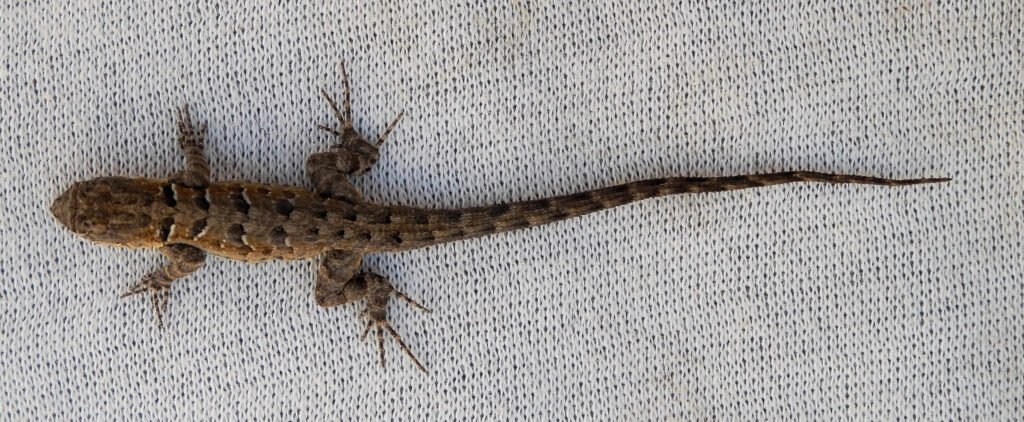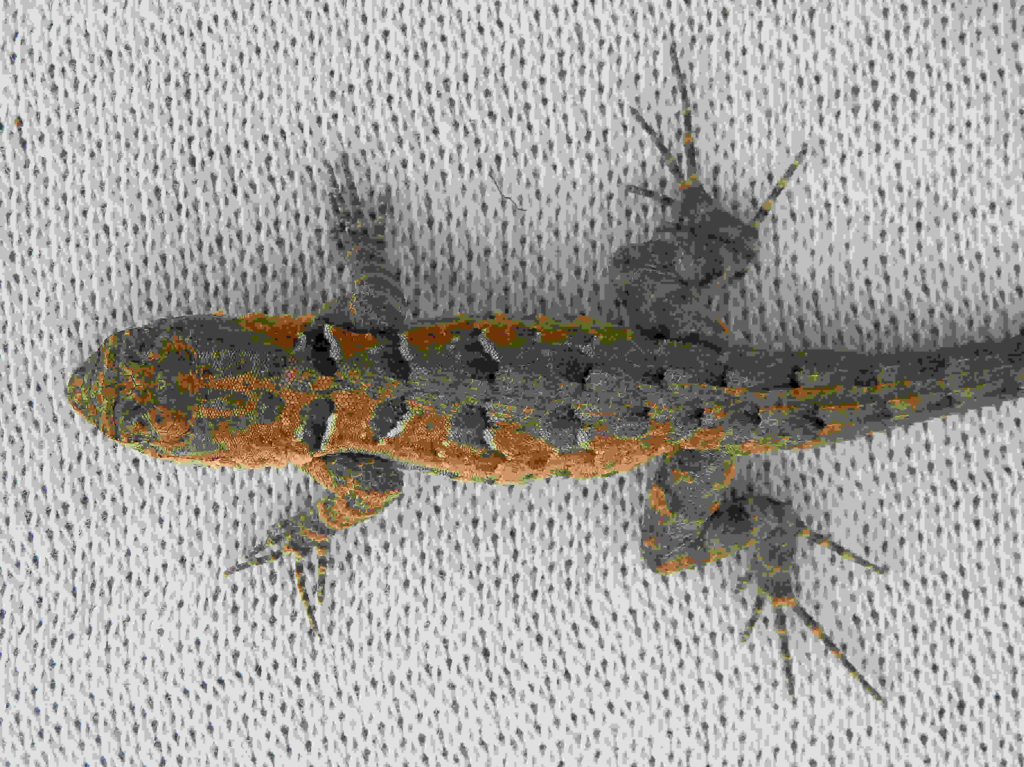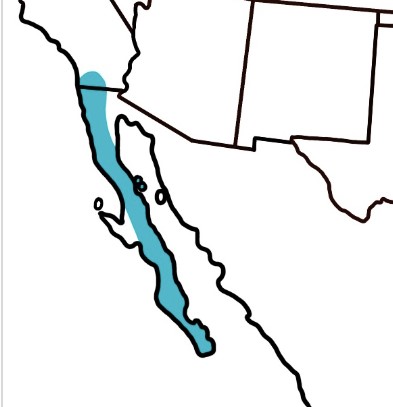Black-tailed Brush Lizard, Urosaurus nigricaudus


 Black-tailed Brush Lizard, Urosaurus nigricaudus. Lizard collected within the bush of the greater Los Cabos area, Baja California Sur, March 2013. Total Length: 9.8 cm (3.8 inches); tail 64%. Collection courtesy of Mauricio Correa, Los Cabos, Baja California Sur. Identification courtesy of Gary Nafis, CaliforniaHerps.com who indicates that this is either a female (which don’t have black tails) or a juvenile male.
Black-tailed Brush Lizard, Urosaurus nigricaudus. Lizard collected within the bush of the greater Los Cabos area, Baja California Sur, March 2013. Total Length: 9.8 cm (3.8 inches); tail 64%. Collection courtesy of Mauricio Correa, Los Cabos, Baja California Sur. Identification courtesy of Gary Nafis, CaliforniaHerps.com who indicates that this is either a female (which don’t have black tails) or a juvenile male.
The Black-tailed Brush Lizard, Urosaurus nigricaudus, is a member of the Phrynosomatidae family, which includes Zebra-Tailed, Earless, Fringe-Toed, Spiny, Tree, Side-Blotched and Horned Lizards. The Phrynosomatidae family is a diverse family of lizards, sometimes classified as a subfamily, that is found from extreme southern Canada to Panama. There are one hundred twenty species in the Phrynosomatidae family placed in nine genera. There are eight species in the Urosaurus genus. The Black-tailed Brush Lizard is are also known as the Baja California Brush Lizard and in Mexico as Lagartija-Arbolera Cola Negra.
The Black-tailed Brush Lizard is small and gray, brown, or sooty in color with dark blotches or crossbars on their back that are sometimes edged with light coloring or white spots. Their tail is usually black (especially in males), can be severed to distract predators, and regenerates easily. Their tails are long and thin, usually more than two times the length of their body. Their tail, dorsal side, and neck are often marked with rust or yellow-brown coloring. Some individuals have an irregular gray or brown stripe down the middle of their back. Their underside is light yellow-gray or white, and some have darker coloring on the underside of their tail. They are sexually dimorphic with males having a yellow, orange, or blue gular fold in the middle of their throat that, when inflated, is used as a defense mechanism and to attract females. They also have blue to blue-green patches on their belly, which may connect in the center, and enlarged post anal scales. Conversely, females have a yellow, orange, or white throat and no blue on their belly. Black-tailed Brush Lizards have small granular scales with a band of enlarged keeled scales down the middle of their back and keeled scales on their tail. They reach a maximum length of 14.2 cm (5.6 inches) with a snout to vent length of 3.8 cm (1.5 inches) to 5.1 cm (2.0 inches).
Black-tailed Brush Lizards Black-tailed Brush Lizards inhabit rocky places with sufficient plants and trees for cover in desert and semi-arid areas. They are especially fond of riparian areas and are sometimes found on buildings and other human constructions. They are good climbers and can move quickly from rock to rock. They consume small invertebrates and unlike most Phrynosomatid lizards, which bury in the sand at night during warm weather, they spend the night on the tips of branches. They are active in the spring and summer and hibernate in the winter. Males defend their territories and attract females by head-bobbing and performing push-up displays that expose their throat and ventral colors. In return, females also perform push-up displays. Breeding occurs between April and August with 1 to 2 clutches of 4 to 8 eggs per year. The Black-tailed Brush Lizard is poorly studied with very limited information available about their lifestyle and behavioral patterns including specific details on age, growth, longevity, movement patterns, diet, habitat use, and reproduction.
The Black-tailed Brush Lizard is most likely confused with Western Side-blotched Lizard, Uta stansburiana elegans. This species is easily distinguished from the Black-tailed Brush Lizard by their characteristic black side blotch.
